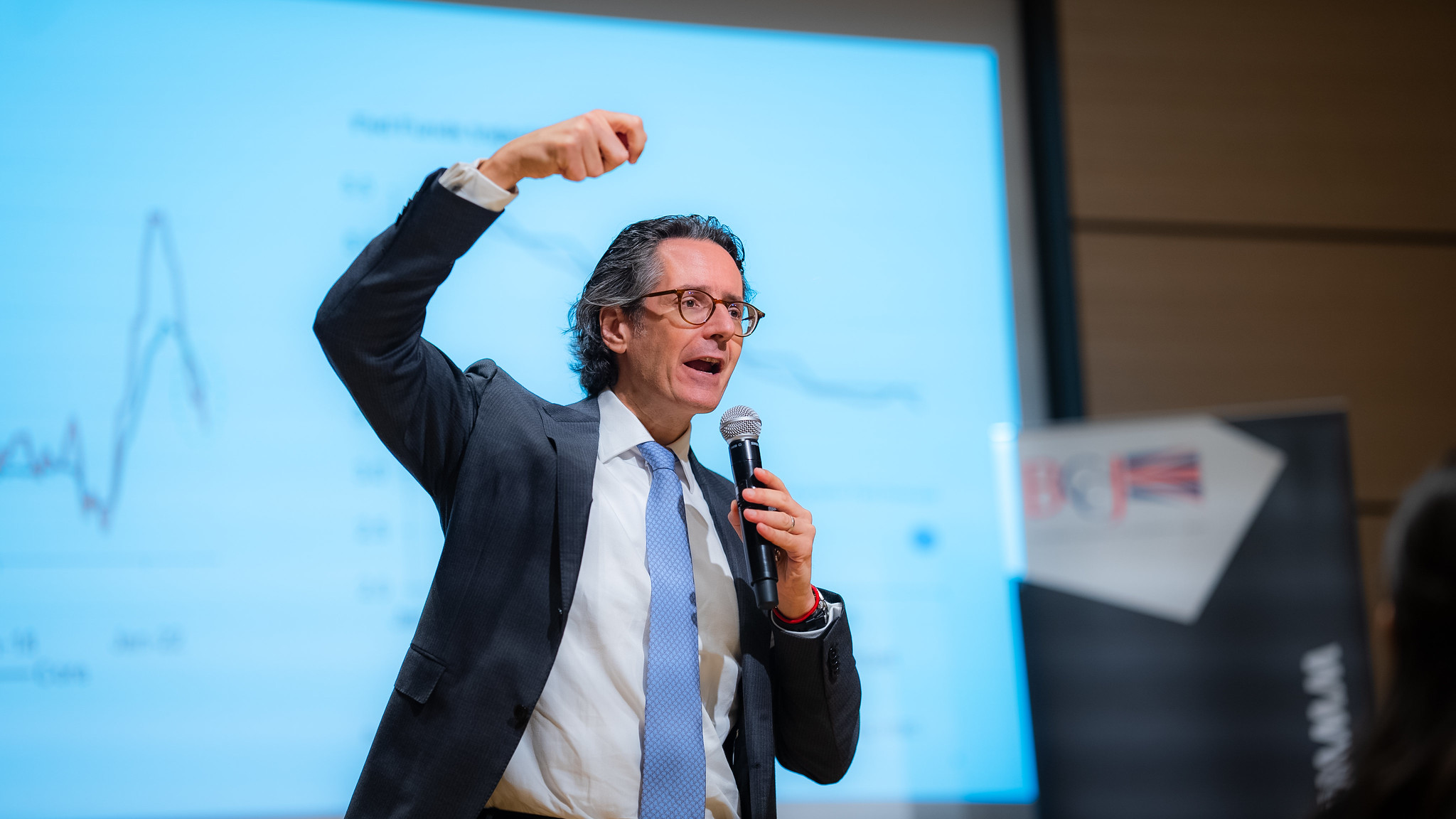Member? Please login
Global Economic Forecast 2024

Written by Sterling Content
May 9, 2024
Past Event Round Ups
Risks abound in Asia’s Year of the Dragon, with conflict in Europe and the Middle East and rising inflation troubling policymakers, along with the upcoming U.S. presidential poll. But despite these threats, the outlook for global growth remains relatively bright, according to global financial services company HSBC.
The International Monetary Fund’s latest projections see the global economy growing at 3.2% during 2024 and 2025—the same pace as in 2023—with a slight acceleration in advanced economies offset by a modest slowdown in emerging economies.
In April, HSBC’s Frederic Neumann, managing director, chief Asian economist and co-head of global research Asia, and Dr Murat Ulgen, global head of emerging markets research, discussed the latest state of play of the world economy, at the British Chamber of Commerce in Japan’s “Global Economic Forecast 2024” event moderated by Naomi Davies, economic and finance counsellor at the British Embassy, Tokyo.
Describing Asia’s economic prospects in the Year of the Dragon as “not so scary,” Neumann said global industrial production had slowed but inflation had started to abate, providing scope for potential interest rate cuts by the U.S. Federal Reserve and others.
“We think gradual interest rate cuts over the coming year should add a bit more support to the global economy … [although] there’s a risk over the next few years that interest rates remain at a higher level than they were pre-pandemic,” he said.
Neumann said elevated inflation levels were due to a “shrinking working-age population in many economies across the world, and shrinking demographics leads to labour shortages and higher wage pressures.”
In Japan, although the working-age population started declining in 1997, it is only recently that wage pressures and inflation have started intensifying. This is due to increased female participation in the labour force and a rise in older workers offsetting the declining pool of workers, he said.
“But what we see now is the female participation rate maxing out at around 80–85%, which is equal to that of men, and the old age worker participation rate is also maxing out. So there’s really no new pool of workers that we can draw upon for the labour force, and suddenly real labour constraints are starting to bite—that’s pushing up wage costs,” Neumann said.
The other structural issue driving higher global inflation is “deglobalisation,” with rising tariff levels and geopolitical issues restricting cross-border investment and trade, thereby reducing efficiency gains and driving “incremental” price pressures, he said.
Higher global interest rates also put pressure on the Bank of Japan (BOJ) to maintain higher interest rates, otherwise the Japanese yen “would continue to depreciate.”
While global trade has declined, Asian trade volumes have proved “surprisingly resilient” he said, with China gaining market share against other economies and moving up the value-add chain in areas such as solar panels, wind turbines, petrochemicals and electric vehicles (EVs).
Neumann said China’s “excess capacity” resulted from Beijing’s industrial policy together with weak demand, with the GDP deflator showing deflation in China. Nevertheless, the Chinese authorities appeared reluctant to prop up demand.

“You don’t see stimulus coming through and that’s exacerbating the deflation pressures in the Chinese economy. That means Chinese exporters are becoming very competitive and taking market share from others,” he said.
Investment accounts for almost half of China’s GDP, and while property investment has declined, manufacturing investment has accelerated, resulting in greater overcapacity.
“China is sitting on enormous amounts of excess steel capacity—they are exporting steel at 30% lower cost than other countries,” he said. This has resulted in lower steel costs for Chinese exporters of whitegoods, ships and EVs, with the Chinese also ramping up investment in industries such as semiconductors.
“China’s export prices have collapsed—and this is extremely hard for any competitor. China is moving up the value-add chain and is competing with more advanced industrial countries, like Germany, South Korea, Taiwan and Japan,” he said.
As a result, countries like Germany and Japan need weaker exchange rates to maintain their competitiveness against Chinese goods.
“That’s why we think the BOJ will be very gradual in its interest rate increases. We’re not convinced the BOJ has a big interest in seeing the yen surge. And if the currency goes below 145 or 140 yen [versus the US dollar] that’s when the competitive threat from China starts to kick in again,” he said.
“Essentially the BOJ only has limited room to raise rates; too sharp an increase in interest rates risks undermining some of the hard-won gains in Japanese inflation in recent years,” he said.
Ulgen said emerging markets (EM) were now a more “bottom-up” investment strategy rather than “top down,” resembling a stock selection process.

“As the squeeze turns to ease in financial conditions, a lower global cost of funding is enough reason to be hopeful about the EM outlook in 2024,” he said.
“Nonetheless, the current ‘goldilocksy’ world view sets the bar to disappointment rather low. A growth surprise is possible, while an inflation surprise is also entirely feasible.”
Asked about the next world recession, Neumann said the global economy remains resilient despite all the “negative headlines.” He pointed to financial systems having strengthened since the global financial crisis, while structural drivers such as green energy also bolster growth prospects.
On Japan, Neumann said the key was “babies and productivity.”
“We’ve had encouraging news from Japan with inflation coming back … but that in itself doesn’t guarantee growth,” he said.
“We can try and encourage Japanese to have more babies … but we need to think harder about immigration. There are 3.2 million foreign workers here in Japan. How can we double that number? The more we put structures in place to allow this, the better.”
He added: “The second factor is productivity. With fewer workers you need to be more productive. Service sector productivity in Japan is still woefully inefficient, and that requires regulatory changes, tax incentives, upgrades of the IT infrastructure—there’s plenty of low-hanging fruit.”







